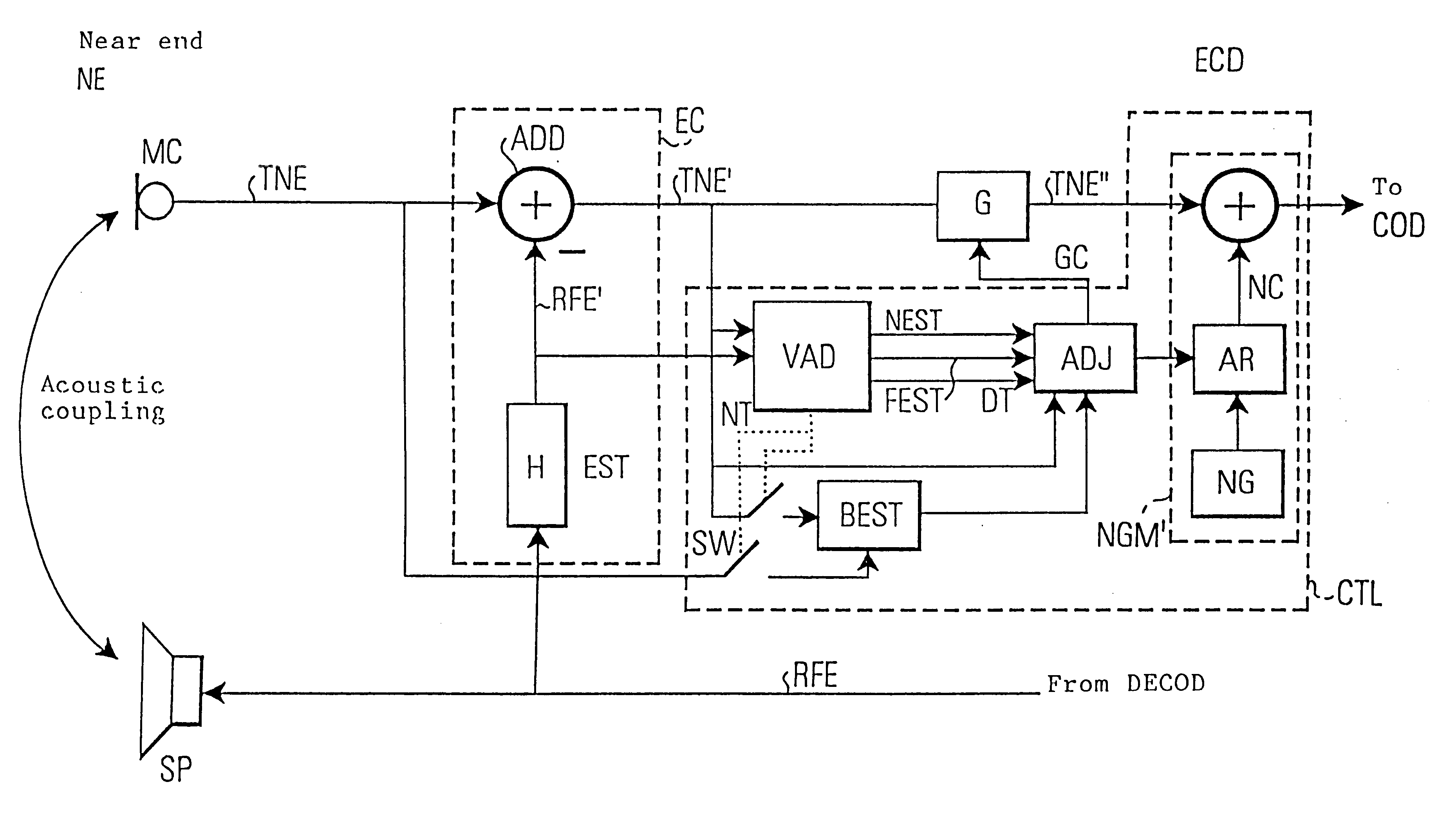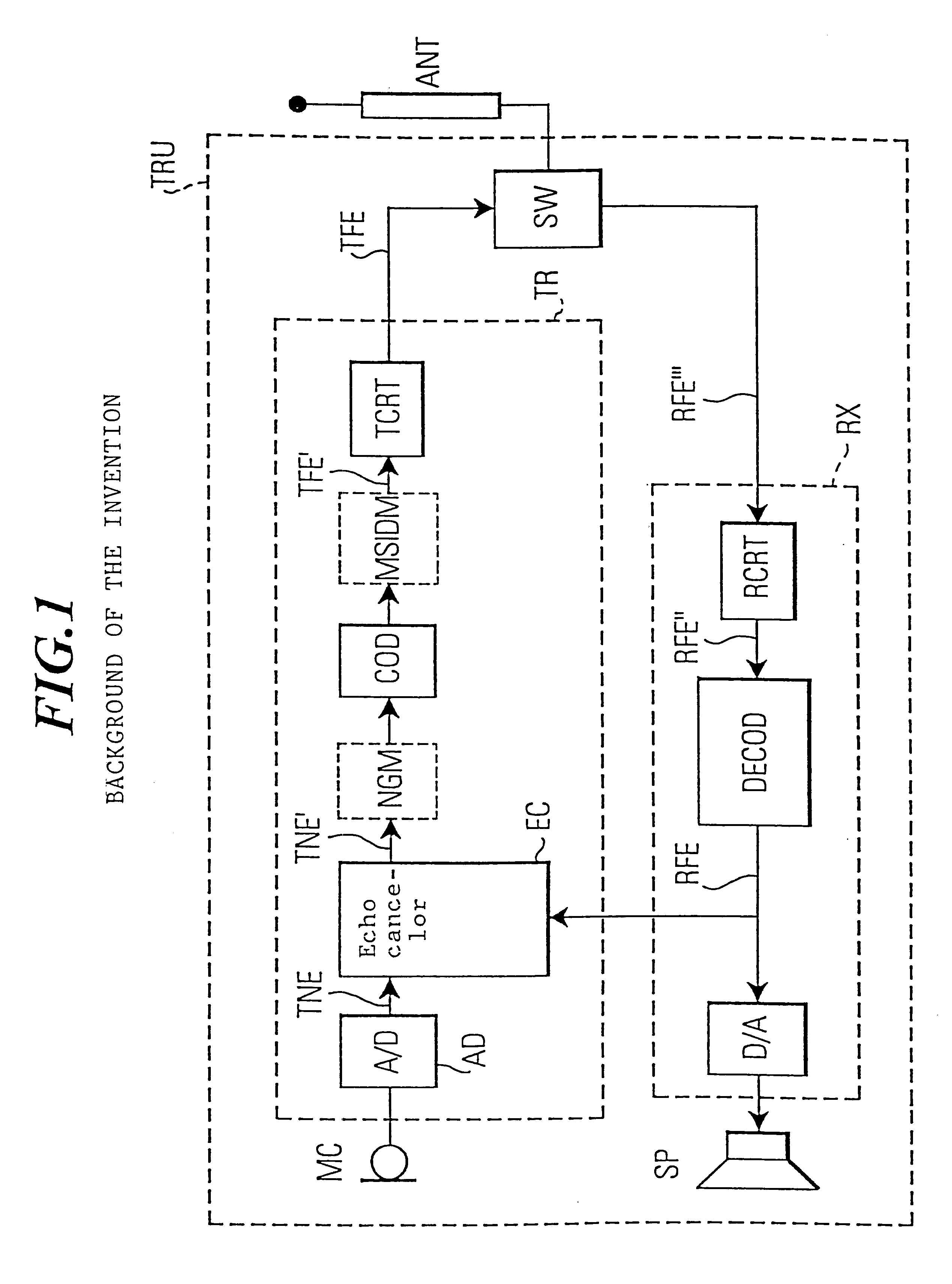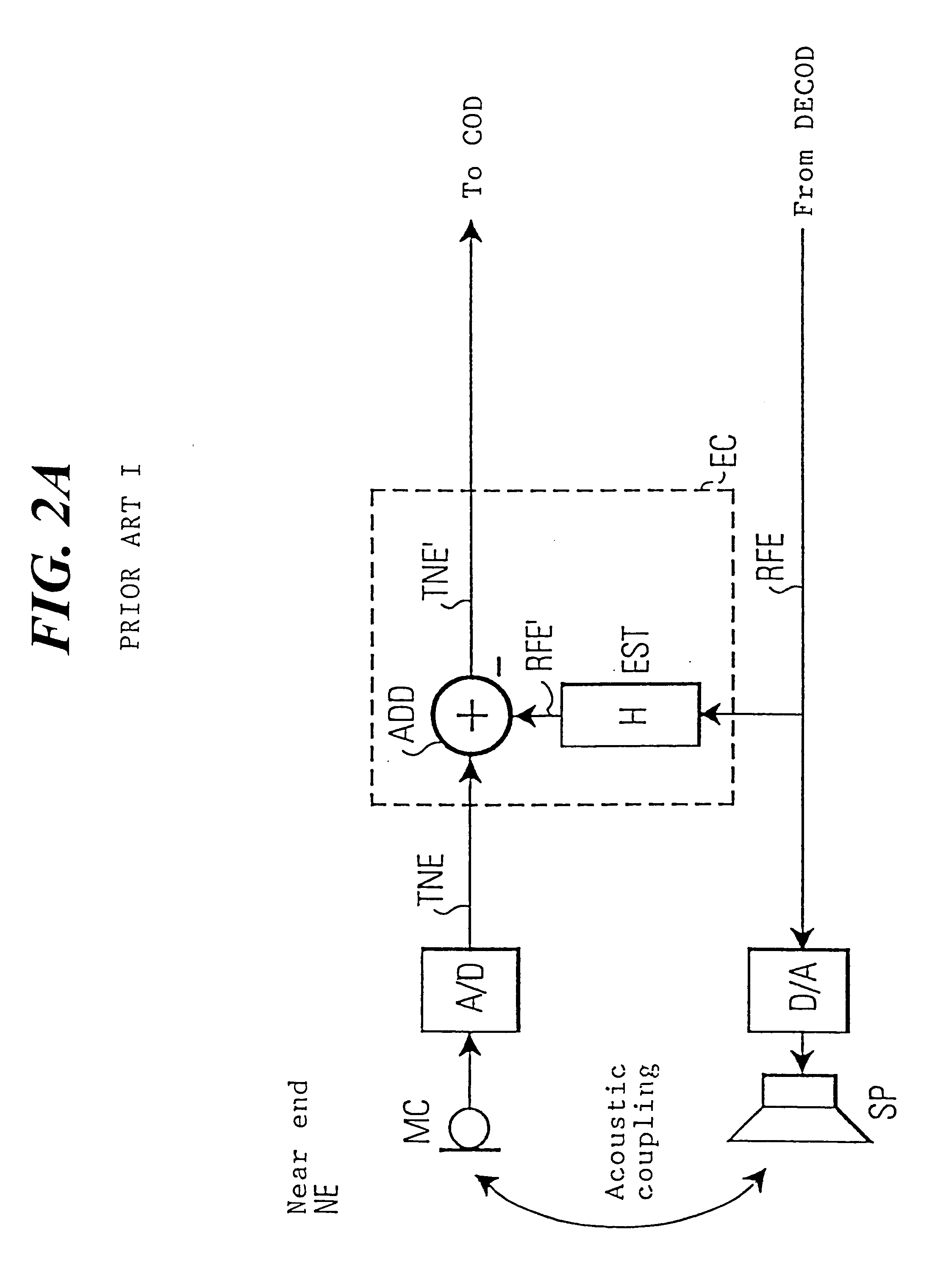Echo cancellation device for cancelling echos in a transceiver unit
a transceiver unit and echo cancellation technology, which is applied in the direction of transmission, substation equipment, instruments, etc., can solve the problems of large occupied resources of the transmitting unit tr, unnatural voice, and inability to achieve good compression ratio of parameters and residual signals
- Summary
- Abstract
- Description
- Claims
- Application Information
AI Technical Summary
Benefits of technology
Problems solved by technology
Method used
Image
Examples
first embodiment
The purpose of the spectral content determining means is to monitor at least one of the signals entering the unit. Preferably, the far end signal spectral content is determined on the basis of the signal RFE' such that the determined spectral content will be close to that of the residual echo signal. Before giving further examples as to how the spectral content determining means determines the spectral content, some general steps of the method of the first embodiment shown in FIG. 5 will be considered.
In a first step for the attenuation of the far end signal, i.e. the residual echo in the output TNE' of the adder ADD, least one signal relating to the far end signal RFE is taken, preferably REF or REF'. This signal is hereinafter denoted with "X".
In a second step a model of the spectral content of the selected signal X is computed by the spectral content determining means CTL. This model of the spectral content is denoted with "A" and can be determined on the basis of
a) a parametric ...
second embodiment
OF THE INVENTION
The second embodiment is also based on the general configuration as shown in FIG. 5. In the second embodiment the residual echo suppression device G comprises a residual echo filter G having an adjustable filter function g adapted to emphasize in the subtractor output signal TNE' of the subtractor ADD a background signal spectral content of the transmission signal in speech pauses. For this purpose the control means CNT contains a background signal model determining means which uses--as in the first embodiment--one or more of the signals TNE, TNE' for estimating a background signal model on the basis of one or more of these signals. When the background signal model has been determined, the background signal model determining means CNT sets the filter function g of the residual echo filter G in accordance with the determined background signal model such that the background signal spectral content is emphasized.
When the near end signal TNE is used for the determination...
third embodiment
OF THE INVENTION
Also a noise generation means NGM' similar to the one shown in FIG. 2B can be used in connection with the invention according to a third embodiment. In the third embodiment an additional noise generation means NGM can be provided essentially at the output of the echo cancellation device EC where an additional adder ADD2 is placed, cf. FIG. 5 and FIG. 5C.
That is, in the third embodiment illustrated in the block diagram of FIG. 5C, the adder ADD2 is used. However, by contrast to FIGS. 2B or 2C it should be noted that the injected noise process is not directly associated with the background noise process nor is the noise switched. The injected noise process is based on the background spectrum but- also weighted using TNE'. The weighting is used to mask the residual echo by a noise process. The masking threshold may be computed in a similar way to that of J. D. Jonston, "Transform coding of audio signals using perceptual noise criteria", IEEE Journal on selected areas in...
PUM
 Login to View More
Login to View More Abstract
Description
Claims
Application Information
 Login to View More
Login to View More - R&D
- Intellectual Property
- Life Sciences
- Materials
- Tech Scout
- Unparalleled Data Quality
- Higher Quality Content
- 60% Fewer Hallucinations
Browse by: Latest US Patents, China's latest patents, Technical Efficacy Thesaurus, Application Domain, Technology Topic, Popular Technical Reports.
© 2025 PatSnap. All rights reserved.Legal|Privacy policy|Modern Slavery Act Transparency Statement|Sitemap|About US| Contact US: help@patsnap.com



